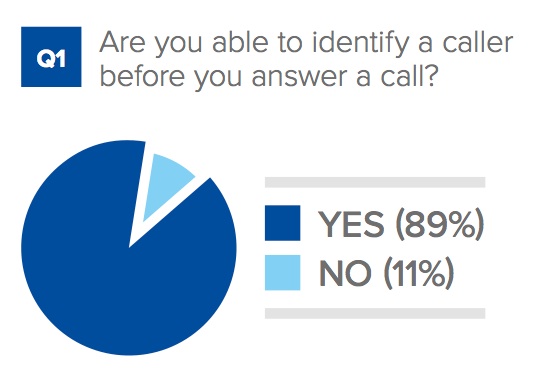Calling customer service is a pain.
Most of us don’t want to call customer service. Three things in particular make the call miserable:
The first is Interactive Voice Response (IVR) systems that try to deflect calls by repeatedly offering self-service. It’s the reason why we repeatedly press “0” or yell “Live Person!” into the phone.
The second is being put on hold. This feels like a waste of time because it is. Anxiety and frustration increase the longer we wait.
The third is repetition. It’s annoying to repeat information the company should already know, such as our name and contact information..
There is some good news. A new report from cloud-based contact center platform NewVoiceMedia reveals that most companies already have the technology to avoid this mess.

Source: NewVoiceMedia
About the Report
NewVoiceMedia partnered with the market research firm, Opinion Matters, to survey 1,018 people who work in contact centers.
The report is called Contact Center Technology Survey: Why businesses are failing their customers. As the title suggests, there are opportunities for contact centers to improve their technological infrastructure.
I also see a glimmer of hope.
Many companies already have technology to deliver better service.You can download the full report or read a summary of key findings below.
IVR Self-Service is Unnecessary
Companies primarily offer IVR self-service to deflect callers away from live agents.
This was a customer benefit prior to the age of online self-service. IVR self-service suddenly made it easier to handle a simple request such as checking your account balance with a few touchtone commands.
The NewVoiceMedia report shows 85 percent of respondents now offer online self-service. My research indicates customers today tend to call customer service only if online self-service doesn’t work or they believe their issue is so complicated a live agent is needed.
This means customers may perceive IVR self-service as an annoying obstacle to live help rather than a customer benefit. The simple solution is to shut it off.
Customers Don’t Need to Be on Hold
Nobody likes to wait on hold.
The NewVoiceMedia report shows that 42 percent of contact centers regularly make customers wait longer than five minutes. This understandably irritates customers.
The good news is there are many ways to reduce hold times without hiring more agents. Here are just a few:
- Adjust schedules to better meet demand
- Improve online self-service (which deflects calls)
- Respond to email faster & better
- Focus agents on first contact resolution (prevents future calls)
- Offer a callback option such as Fonolo
In my interview with Fonolo’s CEO and co-founder, Shai Berger, he explained that a callback feature can actually smooth out spikes in call volume.
“Demand spikes tend to have a cascading effect. Hold times stretch longer, so you have to juggle around your agent lunch and break schedules, which means there might be fewer agents available later in the day when you need them. It sometimes feels like you can never catch up.”
Many contact centers use multiple approaches to reduce demand spikes and prevent this chain-reaction from occurring.
Eliminate Repetitive Repetition
Imagine you’re upset about an unresolved billing issue that you emailed about last week. You call, enter your account number into the IVR, deflect a series of useless self-service offers, and then hold for ten minutes.
You finally get a live agent and face a barrage of annoying questions:
- May I have your account number, please?
- Will you please confirm your first and last name?
- Will you please confirm your phone number?
You eventually get to the help phase of the call only to have to repeat everything you wrote in your email. By now, you’re fuming.
The NewVoiceMedia report suggests this is often unnecessary:
- 89 percent of agents can identify a caller before answering the call
- 82 percent of agents can access information about previous interactions
- 79 percent of agents can follow customers across multiple channels
Contact centers would serve their customers much better by humanizing the service approach. This means leveraging existing technology to allow agents to skip the repetitive questions and quickly getting to the heart of the issue



